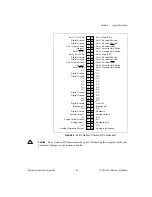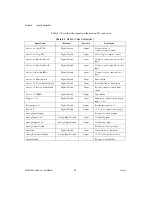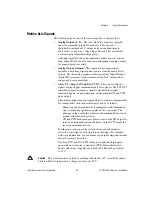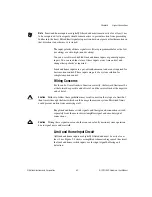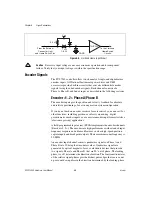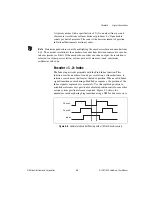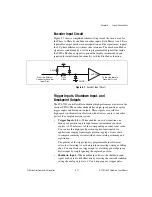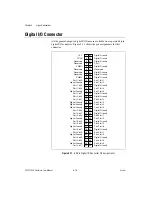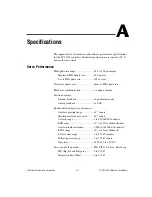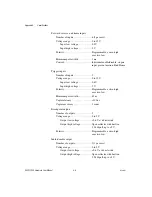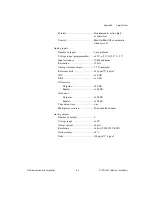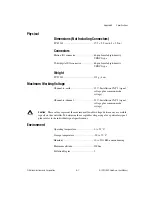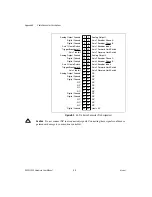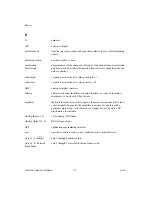
Chapter 5
Signal Connections
©
National Instruments Corporation
5-17
NI PCI-7342 Hardware User Manual
The 32-bit digital I/O port is configured in hardware as four 8-bit digital I/O
ports. The bits in a port are typically controlled and read with byte-wide
bitmapped commands.
All digital I/O lines have programmable direction and polarity. Each output
circuit can sink and source 24 mA.
The DPull pin controls the state of the input pins at power-up. Connecting
DPull to +5 V or leaving it unconnected configures all pins in all ports for
100 k
Ω
pull-ups. Connecting DPull to ground configures the ports for
100 k
Ω
pull-downs.
PWM Features
The PCI-7342 controller provides two pulse-width modulation (PWM)
outputs on the digital I/O connector. The PWM outputs generate periodic
waveforms whose period and duty cycles can be independently controlled
through software commands. PWM is a digital representation of an analog
value, because the duty cycle is directly proportional to the desired output
value. The typical use of PWM outputs is to transmit an analog value
through an optocoupler. A simple lowpass filter turns a PWM signal back
into its corresponding analog value. If desired, you can use the PCLK input
instead of the internal source as the clock for the PWM generators.
Note
These signals are configured in software and are in no way associated with the
PID servo control loop. Refer to your
NI-Motion Software Reference Manual
for more
information about PWM signals.
RTSI Connector
The RTSI bus on PCI-7342 is connected with a ribbon cable to National
Instruments DAQ and IMAQ PCI devices that have RTSI capability.
RTSI Signal Considerations
The PCI-7342 motion controller allows you to use the RTSI signals as
sources for trigger inputs, or as destinations for breakpoint outputs and
encoder signals. The RTSI bus can also serve as a generic digital I/O port.
Breakpoint outputs are output-only signals that generate an active-high
pulse of 90
to 120 ns duration, as shown in Figure 5-12.

